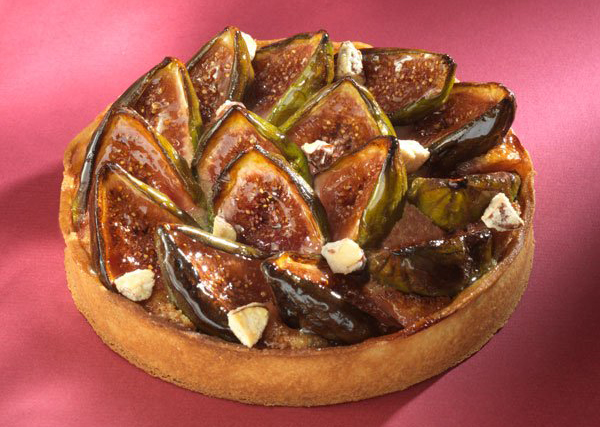ONCE UPON A TIME ...
All articlesThe fig: an ancient treasure
Harvested from August onwards, figs can be enjoyed until October, and it’s when they’re at their ripest they offer up all their nutritious benefits. Figs are fragile, can only be kept for a short time, and do not travel well. It’s much better to buy them in small quantities, even if it means buying them more often ;-)
There are around one hundred fig varieties, but two dominate our market stalls:
- the white fig, with pale green skin and red flesh;
- the violet fig, with a violet red skin of varying shades and garnet-coloured flesh.
The Solliès fig, particularly sought after, belongs to the second category.
It has fewer calories than its sugary flavour would have you believe: 57 kcal/100 g, which is barely more than apples or blackberries. Nutritionally, it’s prized for its high mineral content (potassium, iron, copper), fibre and antioxidants.

A forbidden fruit
The fig is a very ancient fruit, its name even appearing in the Bible. The forbidden fruit in the Garden of Eden, as mentioned in the book of Genesis, is likened to an apple in Christianity, but a fig in Judaism. It’s grown across the whole Mediterranean basin, which is still its most favoured region today.
It was held in particularly high regard by the Romans, who used it for force-feeding geese.
The French have an expression “mi-figue, mi-raisin” (“half fig, half grape”, meaning neither one thing nor the other). It comes from the habit among Corinthian traders of concealing figs in the middle of the grapes they exported to Rome because figs were cheaper.
You cannot tire of enjoying them
Of course, the greatest pleasure comes from tasting them in the shade of the fig tree from which they have just been plucked. They are best enjoyed whole, with their firm flesh and silky skin. But since not everyone is lucky enough to live under a fig tree, we’re more likely to find them on the market stalls or sitting on tarts made by our artisan pastry chefs.
They make an excellent partner for savoury foods: cured ham, sheep’s cheeses or goat’s cheeses. On the sweet side, pastry chefs like to pair them with pistachio, raspberry or vanilla.
Buy them when they’re soft to the touch and plump with a firm stalk. That means they’re perfectly ripe. Don’t leave them hanging around: you risk losing them.
Now’s your chance to prolong your gastronomic pleasure, with some recipes from our pastry chefs:
- Fig, raspberry and pistachio tart by Eric Vergne
- Fig and Piedmont hazelnut tart by William Curley
- Fig and raspberry gâteau by Jordi Tugues
- Fig and cardamom Cakissime by Nicolas Bernardé
- Tarte Garance par Pierre Hermé
We’d love you to share photos of your creations and your tasting comments with us!
Marie Loones for Relais Desserts
BRIEFLY
Laurent Le Daniel has just been named a Chevalier dans l’Ordre National du Mérite. Congratulations to him for this prestigious award, which rewards a passionate pastry chef very invested in the sustainability of his profession.
Prepare Valentine’s Day! Take the time to discover the chocolate or fruity sweets offered by our chefs for sale online. By ordering this week you will be delivered on time.
The French team is selected for the Pastry World Cup! She won the European Cup ahead of Italy and the United Kingdom who are also selected for the grand final in January at Sirha.
JOBS
Pâtisserie
La maison Zanin recrute pour son laboratoire de Sallanches un Second pâtissier en CDI – 39h. Toutes les informations ici !
Pâtisserie
La maison Ducobu, en Belgique, recrute sur différents postes. Toutes les informations ici.





